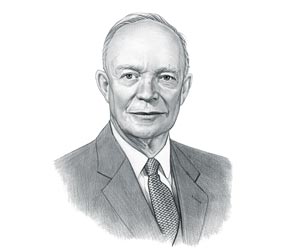|
|
|
|
|
It was a mutual-defense organization and rival alliance to NATO (North Atlantic Treaty Organization) that had been formed in 1949 to counter the threat of Communist expansion during the Cold War. The 1955 Warsaw Pact was prompted by the rearming of West Germany and its admission into NATO on May 5, 1955. The Soviets responded two weeks later on May 14, 1955 by signing the treaty which created a coordinated defense among its communist nations to deter any form of attack from the West. What was the Warsaw Pact? The Warsaw Pact was a military and political alliance between the USSR and seven communist satellite nations behind the Iron Curtain. What date was the Warsaw Pact signed? The date the Warsaw Pact was signed was on May 14, 1955 during the Cold War. The treaty was signed two weeks after West Germany was admitted into NATO on May 5, 1955 with restrictive provisions for West Germany to form an army. What was the purpose of the Warsaw Pact? The purpose of the Warsaw Pact was to form a communist alliance to rival NATO in order to support each other against any foreign aggression from the West Who was in the Warsaw Pact? The members of the Warsaw Pact alliance were the USSR, Bulgaria, Czechoslovakia, East Germany, Hungary, Poland, Romania and Albania Facts about
Warsaw Pact History: The Iron Curtain was the name of the "impenetrable barrier" or border between the Central and Eastern European countries of the Soviet bloc, the sphere of influence of the Soviet Union, and the rest of Europe during the Cold War. History: At the end of WW2 the relationships of the once Allied nations quickly deteriorated and the Soviet-American wartime goodwill and cooperation degenerated into the Cold War History: The North Atlantic Treaty Organization (NATO) was formed at Washington, D.C. on April 4, 1949 following the Berlin Blockade. The purpose of NATO was to provide collective security by creating a mutual defense pact aimed at containing possible USSR aggression and blocking Soviet expansion into Europe. History: NATO originally consisted of 12 countries - Belgium, Canada, Denmark, France, Norway, Iceland, Italy, Luxembourg, the Netherlands, Portugal, the United Kingdom and the United States On May 5, 1955 West Germany was admitted into NATO with the organization's support of West Germany's rearmament and the establishment of the Bundeswehr, the West German army and a West Germany air force. The USSR saw the inclusion into NATO of West Germany as a direct threat and condemned NATO as a warmongering alliance. Just two weeks after the inclusion of West Germany into NATO, on May 14, 1955, the Warsaw Pact was signed as a military alliance of communist countries to rival NATO. In accordance with the United States policy of Containment restricting the spread of communism abroad, America responded to the communist treaty by increasing the number of NATO troops in Germany. The Warsaw Pact was an Eastern European version of NATO which was made up of most of the satellite communist states in that area and was dominated by the USSR. The countries that made up the Warsaw Pact were: The USSR, Poland, East Germany, Czechoslovakia, Hungary, Romania, Bulgaria and Albania. The consequence of the communist alliance was that from 1955 Europe was divided into two armed camps consisting of NATO and the Warsaw Pact. The Communist alliance quickly became a powerful political tool for the Soviets who were able to harness the powers of the Pact's combined military force. Although the Warsaw Pact was said to be based on total equality of each member nation and mutual non-interference in internal affairs, provided a mechanism for the Soviets to exercise even tighter control over the other Communist states and deter members from seeking greater autonomy. The Hungarian Revolution lasted for only 5 days, until November 4, 1956 and ended as 1,000 Russian tanks rolled into Budapest, Hungary. In 1968 Czechoslovakia broke free from Soviet rule in a short, four month peaceful uprising now referred to as the Prague Spring. the Prague Spring ended with a Soviet invasion and an end to reform within Czechoslovakia. They Soviets presented the actions in Hungary and Czechoslovakia as being carried out by the Warsaw Pact rather than by the USSR alone. The establishment of NATO and the Warsaw Pact provided the framework for the military standoff that continued throughout the Cold War (1945 - 1991). However, the alliances maintained the balance of military power between the forces of the West and East, and were of great importance in keeping international peace and stability. The Warsaw Pact was dissolved at the end of the Cold War, after the break-up of the USSR in 1991.In 1994 NATO offered former Warsaw Pact members limited associations in the form of the Partnership for Peace program. Following the 9/11 terrorist attacks, the supportive response from Russia led to the establishment of the NATO-Russia Council in May 2002. The NATO-Russia Council gives Russia an equal role with the NATO countries in decision-making on policies to counter terrorism and other security threats. |
| US American History |
| 1945-1993: Cold War Era |
|
|
|
|
|
First Published2016-04-19 | |||
|
Updated 2018-01-01 |
Publisher
Siteseen Limited
| ||
|
|

